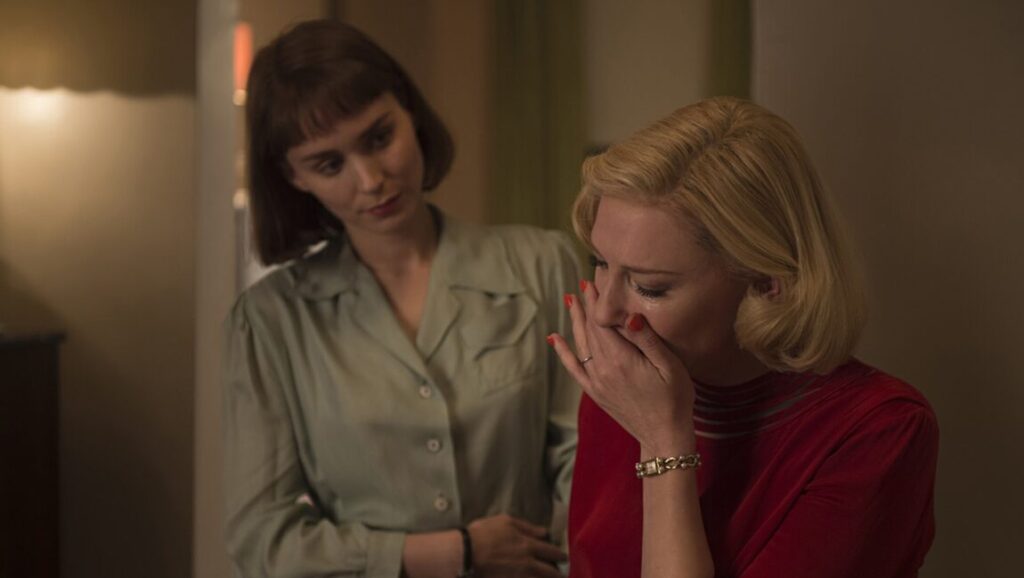Like someone’s old love letters or the keepsake wilted flowers of a first love, Carol has the feel of a kind of attic picture that’s been sitting and collecting dust for years, an appropriate matching of form and function. Shot on grainy 16mm, director Todd Haynes prefers a faded color palette that evokes an aged quality in the film’s images. The film feels less like an homage to the melodramas of the 1950s and more like it was actually filmed there—an observance of natural life during the period, with pervasive homophobia infiltrating every aspect of its principle characters’ lives, always ready to extinguish their happiness. That this story could exist freely, 65 years later, is the kind of ending that author Patricia Highsmith would have dreamed of when writing The Price of Salt, the book on which Carol is based.
Carol Aird (Cate Blanchett) has long been stuck in a marriage, bound by compulsory heterosexuality, to a man, Harge (Kyle Chandler), who is domineering and ruthless in his supposed ownership of her life. Harge is crushed by Carol‘s inability to connect with him, and becomes hateful towards her following rumors of her bedding other women, during and prior to their separation. The circumstances surrounding Carol’s desires and her sexual orientation are made tragic by the world’s cruel treatment of lesbianism, but she listens to her heart despite knowing everything she risks in doing so, chasing a spark of desire toward a life where love isn’t an act but a reaction to something within herself. Therese (Rooney Mara) is that spark.
Haynes always puts some kind of distance between his lovers, as if the camera’s presence itself could somehow compromise their lives together.
Carol and Therese’s journey towards romantic fulfillment might’ve been the sort of narrative that would show lovers being swept away on the tides of their infatuation, fast and blinded to any responsibilities in their lives—that is, if they were a straight couple. Instead, Carol and Therese’s love is bountiful but one of calculated risk, threatening to fall apart at any second if they are too loud or too brash—a dam ready to burst if it were only safe to exhale. This is almost instantaneous; it could be described as love at first sight, but it doesn’t have a language or a context for Therese. Unlike Carol, who knows exactly what she wants, Therese stumbles around the words when trying to subtly relay her feelings to her then-boyfriend (“Have you ever heard of a boy and another boy falling in love? Have you ever loved a boy?”), who responds in questioning protest, similar to the manner in which Carol’s husband behaves.
The uncertainty of Therese’s newfound sexuality is filtered through Haynes’ lens, which keeps things as restrained as possible, focusing on small moments in the public space where Therese and Carol find quiet ways to convey their romance: the grasp of a shoulder that lasts a little too long, or holding hands in an isolated corner of a restaurant. Haynes always puts some kind of distance between his lovers, as if the camera’s presence itself could somehow compromise their lives together. They converse in long shots, and are obscured slightly by doorways or windows in close-up. In Carol‘s narrative context, anything more intimate would invite certain disaster. But behind closed doors, they let down their guard, giving themselves to one another in fleeting moments—and it’s here that the reticence Haynes has employed pays off. The depiction of their sex is a masterstroke of controlled tone and motivation, of pent-up emotions freed. Therese is still unsure, but Carol guides her; Carol has always been guiding her, since their initial meeting as clerk and customer at a department store. Therese finally reconciles her feelings in a language she’s familiar with: love.

